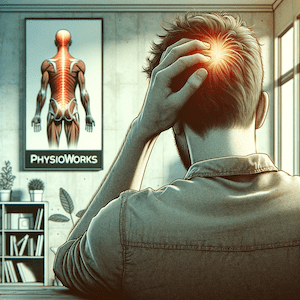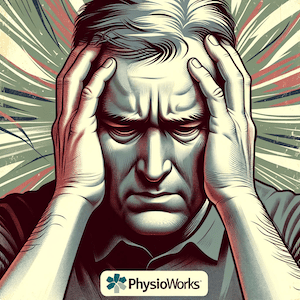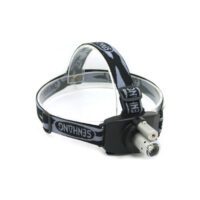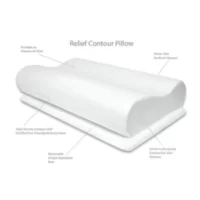
Article by Matthew Hewitt
Headache Causes
Headaches and migraines, unfortunately common, can greatly affect our lives. Understanding their types and causes is key to effective management and treatment.
Headaches and migraines can stem from a variety of factors. These include conditions related to the neck and jaw. Some specific types you might experience are neck, tension, cluster, and migraines.
Neck-related issues like neck pain, facet dysfunction, and pinched nerves can also lead to headaches. Additionally, jaw conditions such as TMJ pain and dysfunction can cause jaw headaches.
Headache Symptoms Differ
Identifying a headache's location, duration, and intensity can help pinpoint potential causes and effective treatments. This information isn't definitive but helps distinguish possible headache or migraine types.

Common Headache Types
Tension-Type Headaches
Tension-type headaches usually feel like a band across the forehead, extending into the neck. They are continuous, non-pulsating, and may be accompanied by neck or shoulder tenderness, but not nausea or increased sensory sensitivity.
Jaw Headache
TMJ or jaw-related headaches are localised around the jaw and ear, affecting one side. They often come with jaw movement issues, chewing difficulties, or sensations of clicking, locking, and catching in the jaw. TMJ physiotherapists and your dentist are good practitioners to start with to assess and treat your TMJ headache.
Neck Headache
Neck headaches (cervicogenic headaches) are typically a steady, non-throbbing pain at the skull's base, around one eye, or over the top of the head. They may also involve limited neck mobility, but this is not essential. your physiotherapist is best person to see for assessing and relieving your neck headache.
Cluster Headache
Cluster headaches are intensely concentrated around one eye. Accompanying symptoms can include a runny nose, drooping or reddened eye, or increased facial perspiration.
Concussion Headache
Concussion-related headaches resemble migraines with a throbbing sensation and are closely linked to concussions. If these headaches worsen, or if symptoms like slurred speech, seizures, or unusual behaviour occur, seek medical attention immediately.
Sinus Headache
Sinus headaches are characterised by pain, pressure, or fullness from the sinuses, often worsening when bending forward or lying down. They can also cause toothache-like pain or nasal congestion.
Migraines
Migraines often affect one side of the head, involving the entire side of the head and face. They can occur with or without visual disturbances (aura) and include symptoms like nausea and sensitivity to light and noise.
In Conclusion
The causes of headaches and migraines vary, as do their treatments. Consult a healthcare practitioner such as your physiotherapist or doctor for accurate diagnosis and tailored treatment plans. Understanding these differences is essential for effective headache management and relief.
General Information
- Migraine vs Headache
- Specific Migraine - Headache Types
- Neck Headache
- Tension Headache
- Cluster Headaches
- Migraine
- Vestibular Migraine
- TMJ Headache
- Concussion




























































